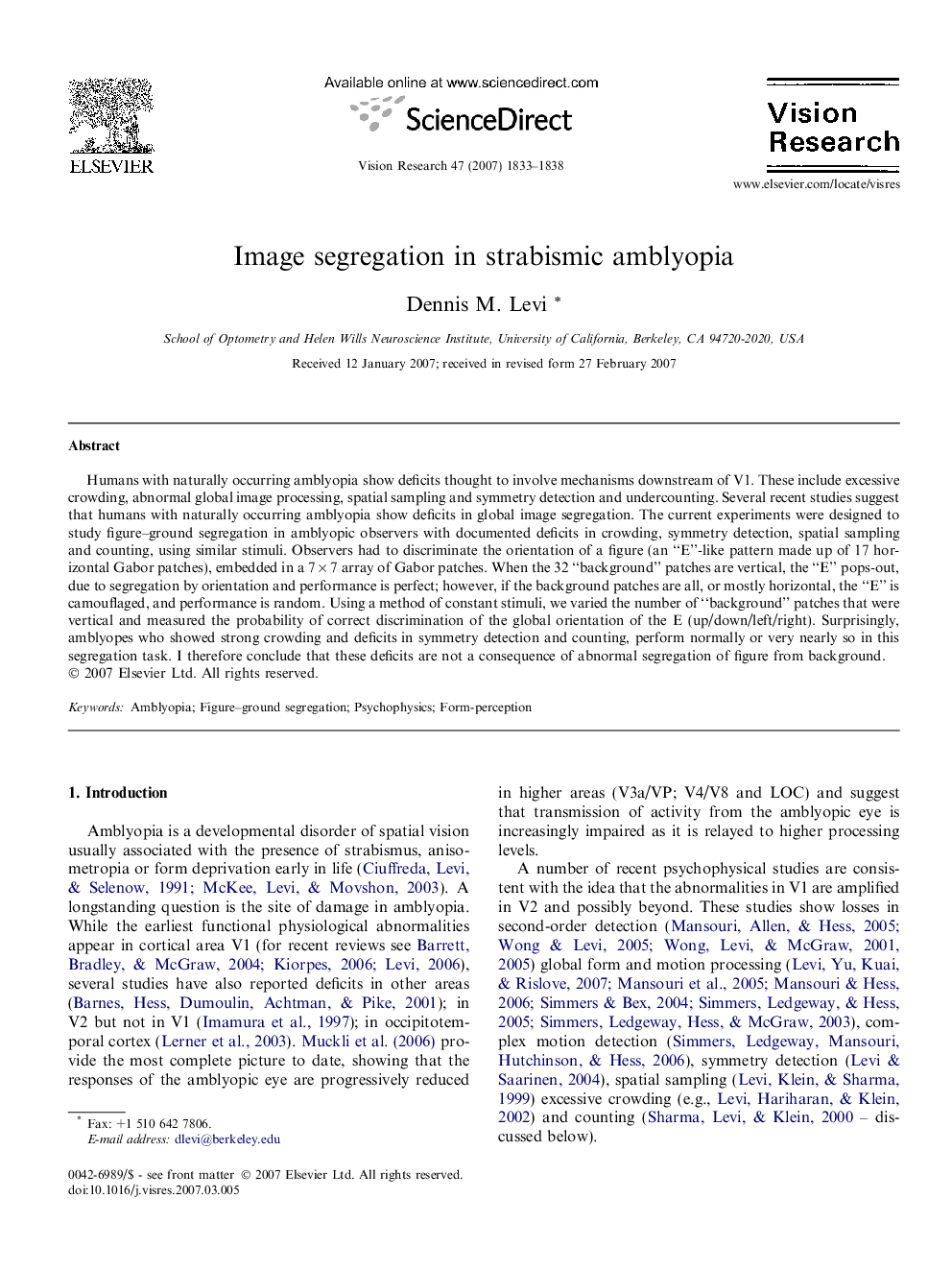| Article ID | Journal | Published Year | Pages | File Type |
|---|---|---|---|---|
| 4036260 | Vision Research | 2007 | 6 Pages |
Humans with naturally occurring amblyopia show deficits thought to involve mechanisms downstream of V1. These include excessive crowding, abnormal global image processing, spatial sampling and symmetry detection and undercounting. Several recent studies suggest that humans with naturally occurring amblyopia show deficits in global image segregation. The current experiments were designed to study figure–ground segregation in amblyopic observers with documented deficits in crowding, symmetry detection, spatial sampling and counting, using similar stimuli. Observers had to discriminate the orientation of a figure (an “E”-like pattern made up of 17 horizontal Gabor patches), embedded in a 7 × 7 array of Gabor patches. When the 32 “background” patches are vertical, the “E” pops-out, due to segregation by orientation and performance is perfect; however, if the background patches are all, or mostly horizontal, the “E” is camouflaged, and performance is random. Using a method of constant stimuli, we varied the number of “background” patches that were vertical and measured the probability of correct discrimination of the global orientation of the E (up/down/left/right). Surprisingly, amblyopes who showed strong crowding and deficits in symmetry detection and counting, perform normally or very nearly so in this segregation task. I therefore conclude that these deficits are not a consequence of abnormal segregation of figure from background.
